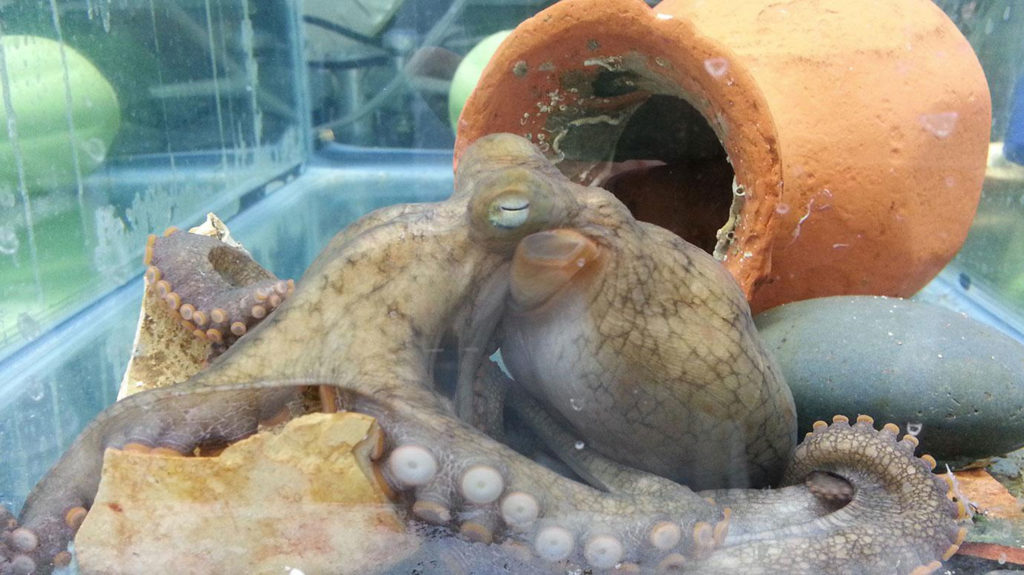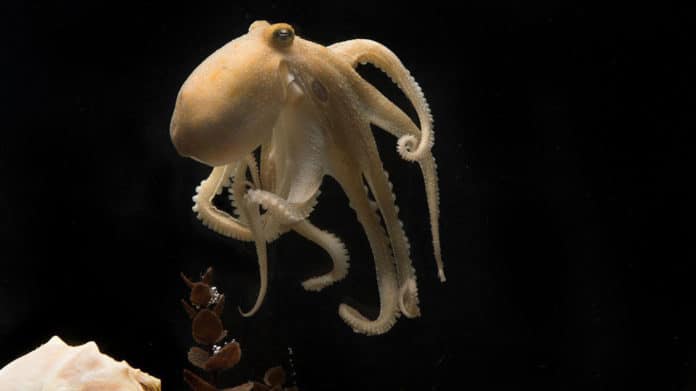After laying eggs, mother octopuses quit eating and waste away; by the time the eggs hatch, she is dead. Some captive females appear to accelerate this process by mutilating themselves and twisting their arms into a tangled mess.
Like the pituitary gland in mammals, the optic gland appears to be the source of this strange maternal behavior. The optic gland in maternal octopuses undergoes a massive shift in cholesterol metabolism, resulting in dramatic changes in the steroid hormones produced, according to a new study by researchers from the University of Chicago, the University of Washington, and the University of Illinois Chicago (UIC).

Changes in cholesterol metabolism in other animals, including humans, can have severe consequences for longevity and behavior. The researchers believe that this reveals essential similarities in the functions of these steroids across the animal kingdom in both soft-bodied cephalopods and vertebrates.
Cholesterol is vital from a dietary perspective. It is involved in everything from the flexibility of cell membranes to the production of stress hormones. However, the study reveals a big surprise that cholesterol plays a part in this life cycle process.
Scientists analyzed the chemicals produced by the maternal octopus optic gland. Three different pathways were involved in increasing steroid hormones after reproduction. One of the pathways delivers pregnenolone and progesterone, two steroids commonly associated with pregnancy. Another produces maternal cholestanoids or intermediate components for bile acids, and the third has increased levels of 7-dehydrocholesterol (7-DHC), a precursor to cholesterol.
During the stages of decline, the maternal optic gland changes dramatically, producing more pregnenolone and progesterone, maternal cholestanoids, and 7-DHC. While pregnancy hormones should be predicted, this is the first time bile acid, or cholesterol components have been connected to the maternal octopus death spiral.
Z. Yan Wang, Ph.D., Assistant Professor of Psychology and Biology at the University of Washington and lead author of the study, said, “Some of these same pathways are used to produce cholesterol in mice and other mammals. There are two major pathways for creating cholesterol that is known from studies in rodents, and now there’s evidence from our study that those pathways are probably present in octopuses. It was fascinating to see the similarity across such different animals.”
Increased 7-DHC levels are highly toxic in humans. It’s the hallmark of a genetic disorder called Smith-Lemli-Opitz syndrome (SLOS), caused by a mutation in the enzyme that converts 7-DHC to cholesterol.
Disturbances in the cholesterol production process in octopuses lead to consequences like it does in other animals.
Clifton Ragsdale, Ph.D., Professor of Neurobiology at UChicago, said, “What’s striking is that they go through this progression of changes where they seem to go crazy right before they die. Maybe that’s two processes, maybe it’s three or four. Now, we have at least three independent pathways to steroid hormones that could account for the multiplicity of effects that these animals show.”
Wang said, “The optic gland exists in all other soft-bodied cephalopods, and they have such divergent reproductive strategies. It’s such a tiny gland, and it’s underappreciated, and I think it’s going to be exciting to explore how it contributes to such a great diversity of life-history trajectories in cephalopods.”
Journal Reference:
- Z. Yan Wang et al. Steroid hormones of the octopus self-destruct system. DOI: 10.1016/j.cub.2022.04.043
